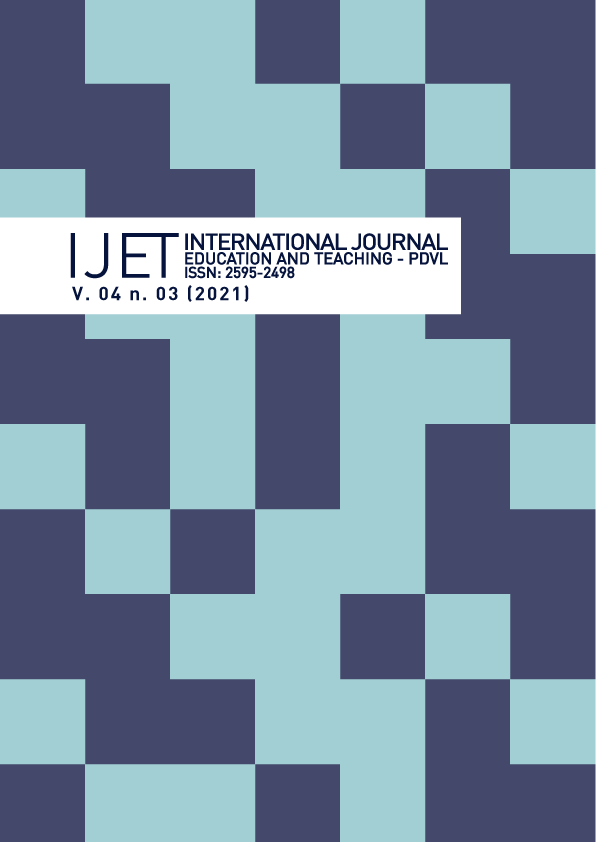ANALYSIS OF THE DOPPLER EFFECT, APPLICATIONS AND EXPERIMENT WITH THE USE OF ICT'S DESIGNATED FOR TEACHING-LEARNING
DOI:
https://doi.org/10.31692/2595-2498.v4i3.195Keywords:
Doppler Effect, Teaching Physics, Information and Communication TechnologiesAbstract
The Doppler effect is characterized by the change in frequency perceived by a receiver from the relative movement of sound wave sources, but which can be extended to other types of waves, including electromagnetic waves. This article aims to explain this phenomenon, from an approach that indicates the importance of its description, in order to integrate such knowledge in the teaching context in a more practical way. Therefore, we also present an effective teaching proposal through Information and Communication Technologies (ICTs). The exposed article is based on the condensation of knowledge based on the Doppler effect and its consequences, which culminated in the development of numerous areas that cover the scope of physics, and the evolution of modern theories that were only possible due to the discovery and study of this phenomenon. This information is explained with the intention of being used in Physics Teaching together with the use of ICTs, instigating the curiosity of students in the classroom. Briefly, this article contains a description of the basic concept that permeates the Doppler effect, the development of particular and general equations through images and analogies that simulate everyday cases and a sample of a simple experiment using electronic device applications, which can be used as a didactic resource in the classroom, enabling the visualization of this phenomenon in a practical way. Finally, we make an explanation about applications in aeronautics, analyzing aircraft that exceed the speed of sound, and in the field of astronomy, approaching the proof of the expansion of the universe through Hubble studies. In light of the above, it is concrete to ratify that describing such a phenomenon was of great relevance to the development, including of modern physics and science as a whole, and that this special phenomenon can be detailed, experienced and visualized in a teaching context using ICTs as a way of to instigate the knowledge of the students about the studied subject and its wide applications.
Downloads
References
CCVALG, Núcleo de Astronomio Centro de Ciência Viva do Algarve. Nebulosas de emissão. Jul, 2012 Disponível em: <http://www.ccvalg.pt/astronomia/nebulosas/nebulosas_emissao.htm>. Acesso em: 14 jan. 2022.
FERNANDES, A. C. P. et al. Efeito Doppler com tablet e smartphone. Revista Brasileira de Ensino de Física, v. 38, n. 3, 2016. Disponível em: < https://www.scielo.br/j/rbef/a/KMNFb4j6KP7JysLgcZM7dfq/?format=pdf&lang=pt>. Acesso em: 14 jan. 2022 DOI: https://doi.org/10.1590/1806-9126-RBEF-2016-0006
HARADA, E. Entenda o que é a barreira do som e como funcionam os aviões supersônicos. 01 fev 2016. tecmundo.com. Disponivel em: <https://www.tecmundo.com.br/ciencia/94825-entenda-barreira-som-funcionam-avioes-supersonicos.htm> . Acesso em: 14 jan. 2022.
HAWKING, S. O universo numa casca de noz. Rio de Janeiro: Intríseca. 2016.
HAWKING, S. Uma breve história do tempo. Rio de Janeiro: Intríseca. 2015.
HEWITT, P. G. Física Conceitual. 12º. ed. Porto Alegre: Bookman, 2015.
INMETRO. Portaria Inmetro nº 544, de 12 de dezembro de 2014. Estabelece a regulamentação metrológica. Rio de Janeiro, 12 dez. 2014. Disponivel em: <http://www.inmetro.gov.br/legislacao/rtac/pdf/RTAC002192.pdf>. Acesso em: 14 jan. 2022.
NASCIMENTO, Marcílio da Silva. Efeito doppler no ensino médio: uma sequência de ensino de ondulatória com prática, uso de tics e metodologia ativa. Dissertação (Mestrado em Ensino de Física)- Instituto de Ciências Exatas, Universidade Federal Fluminense. Volta Redonda, p. 120. 2019. Disponível em: < https://app.uff.br/riuff/bitstream/handle/1/13269/Dissertacao%20Marc%c3%adlio%20Da%20Silva%20Nascimento.pdf?sequence=1&isAllowed=y>. Acesso em: 14 jan. 2022.
NUSSENZVEIG, H. M. Curso de Física Básica, Fluidos Oscilações e Ondas Calor. 4º. ed. São Paulo: Edgard Blucher, v. 2, 2002.
WANDERLEY, D. S. A quebra da barreira do som. Monografia (Engenharia Eletrônica e de Computação) - Universidade Federal do Rio de Janeiro (UFRJ). Rio de Janeiro, p.54. 2010. Disponível em: <http://www.pads.ufrj.br/~diegow/BarreiradoSom/BarreiraSom_vfinal.pdf>. Acesso em: 14 jan. 2022.
Downloads
Published
Conference Proceedings Volume
Section
License
Copyright (c) 2021 Marcos André Araújo de Sousa, Bruno Carvalho Silva, Lucas de Moura Santos, Emanuel Veras de Souza (Autor)

This work is licensed under a Creative Commons Attribution 4.0 International License.






